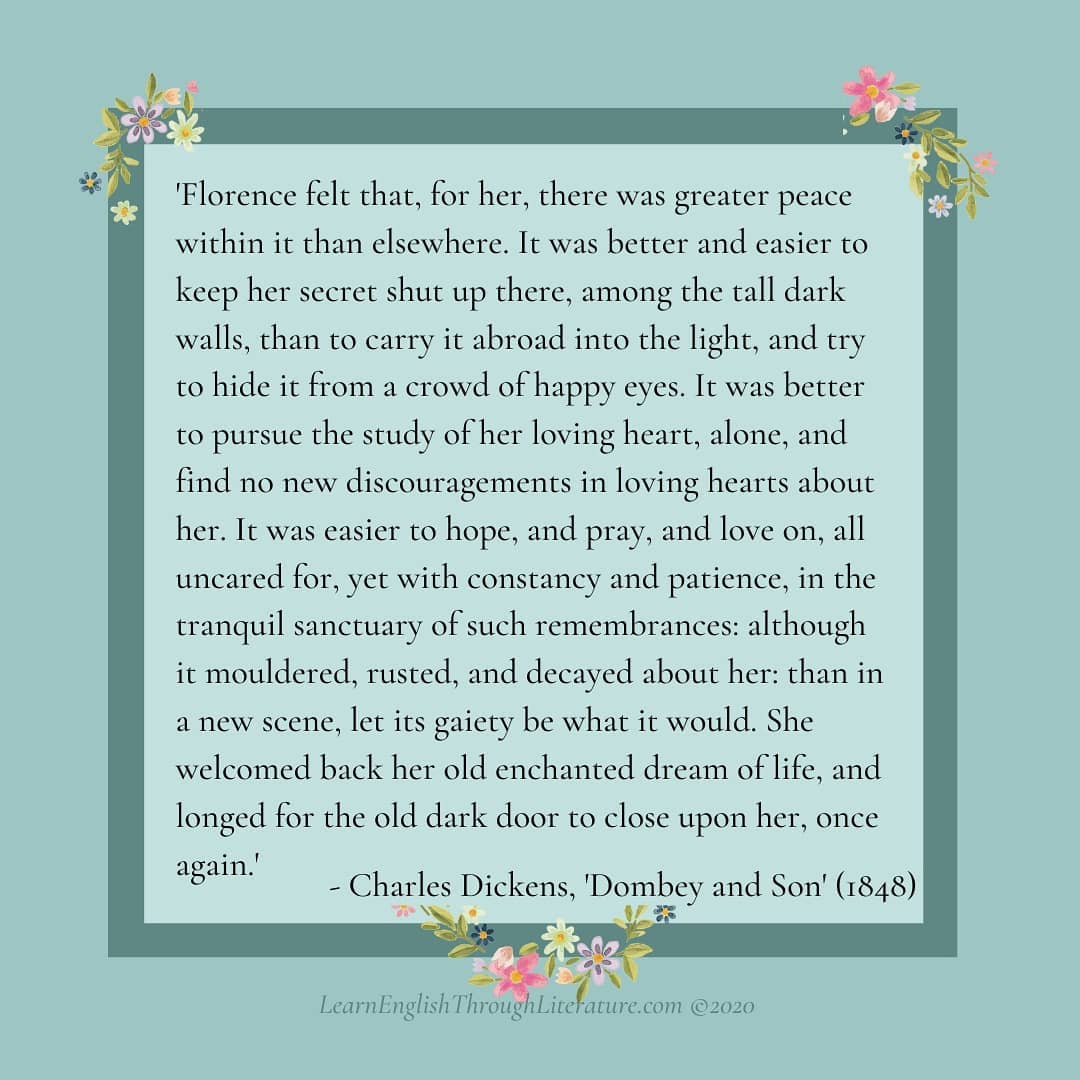Here we will look at a paragraph from Dombey and Son that illustrates how many ‘NON-ESSENTIAL CLAUSES’ (defined in the last post) Dickens tended to use.
✍️ By including such essential or non-essential clauses in your writing, you are discreetly REINFORCING or even INTRODUCING information that would otherwise ‘clutter’ your writing, and you are doing it in a way that allows any reader to pause at the commas and mention the ‘non-essential’ information without losing the overall sense of the sentence.
📗 ‘Florence felt that, for her, there was greater peace within it than elsewhere. It was better and easier to keep her secret shut up there, among the tall dark walls, than to carry it abroad into the light, and try to hide it from a crowd of happy eyes. It was better to pursue the study of her loving heart, alone, and find no new discouragements in loving hearts about her. It was easier to hope, and pray, and love on, all uncared for, yet with constancy and patience, in the tranquil sanctuary of such remembrances: although it mouldered, rusted, and decayed about her: than in a new scene, let its gaiety be what it would. She welcomed back her old enchanted dream of life, and longed for the old dark door to close upon her, once again.’
– Charles Dickens, Dombey and Son (1848)
Here are some ‘non-essential clauses’ which Dickens used:
📝 ‘for her’ (adds emphasis to Florence’s experience),
📝 ‘among the tall dark walls’ (adds detail to ‘there’),
📝 ‘alone’ (reinforces Florence’s aloneness),
📝 ‘all uncared for’ and ‘yet with constancy and patience’ (both could be excluded from the sentence they are in and the sentence’s meaning would still be preserved).
✏️ Do you think that by using non-essential clauses more in your writing, you will achieve more clarity? I recommend you give it a try sometime; if it worked for Dickens, it can surely work for you!




